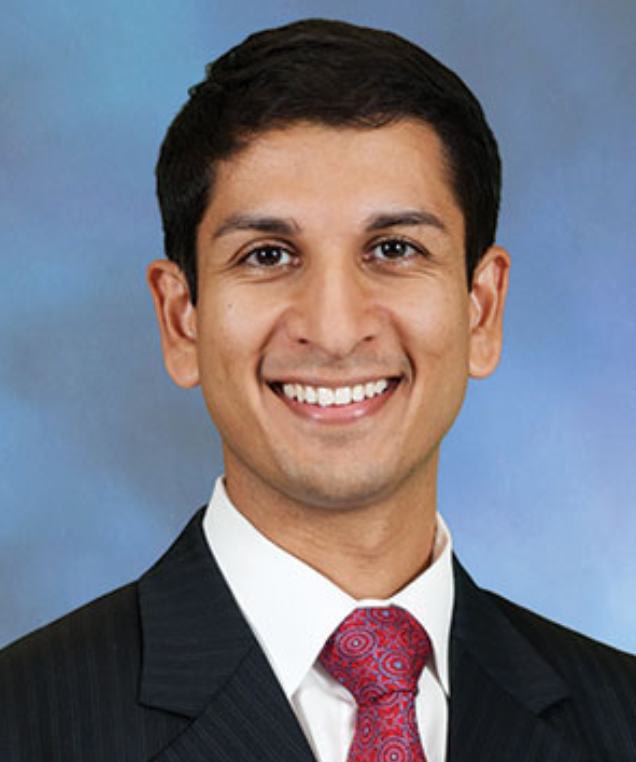Article
IPL + thermal pulsation: A thorough approach to dry eye
Author(s):
IPL + thermal pulsation: A thorough approach to dry eye

Editor’s Note: Welcome to “Eye Catching: Let's Chat,” a blog series featuring contributions from members of the ophthalmic community. These blogs are an opportunity for ophthalmic bloggers to engage with readers with about a topic that is top of mind, whether it is practice management, experiences with patients, the industry, medicine in general, or healthcare reform. The series continues with this blog co-authored by Steven J. Dell, MD, and Neel R. Desai, MD. The views expressed in these blogs are those of their respective contributors and do not represent the views of Ophthalmology Times or UBM Medica.
The only way to treat dry eye effectively is with a comprehensive approach. The problem is just so multifaceted, from its underlying causes and exacerbating factors to its sign and symptoms (or lack thereof), that there is no single “silver bullet” treatment.
In addition to standard therapies, we have begun pairing intense pulsed light (IPL) therapy using the Optimize Pulse Technology (OPT) of the Optima IPL system (Lumenis) with thermal pulsation therapy using LipiFlow (Johnson & Johnson Vision).
This one-two punch approach is logical: IPL treats inflammation, the underlying cause of dry eye disease. Thermal pulsation addresses meibomian gland dysfunction (MGD), a major component of dry eye pathology, by unclogging the glands and evacuating their abnormal content.
When we treat both the inflammatory source and the resulting clogged glands in patients with symptoms of both problems, we find that they experience long-term, definitive positive effects.
Controlling inflammation with IPL
When patients have rosacea or visible symptoms of inflammation, such as telangiectasia, we treat dilated capillaries with IPL’s targeted wavelengths, causing them to involute. The result: leakage of inflammatory mediators is suppressed, interrupting the vicious cycle of inflammation and improving symptoms of dry eye.1
Recently, a few studies have directly demonstrated that IPL therapy reduces the inflammation.
In one study, tear sample levels of key inflammatory markers were dramatically reduced in eyes that were treated with IPL, compared with fellow eyes that were treated with sham.2
Another study using confocal microscopy showed that the density of inflammatory cells in the cornea significantly decreased after IPL.3
With IPL, we treat the entire malar region, from ear to ear, across the lower eyelids and bridge of the nose. This protocol allows us to address a large portion of blood supply to the lower lids as well as some of the upper lids (coming from the lateral part of the eyelid skin).
Treatment spans four sessions scheduled two to four weeks apart. Maintenance treatment starts at around six months and may spread to one treatment per year. Because IPL is used to treat facial rosacea as well, treatment of lower face telangiectasia can be combined with dry eye treatment.
The choice of IPL technology matters. At the Eye Institute of West Florida, when practitioners switched from a system that patients found to be hot and uncomfortable to the cooled head of the Optima IPL, the volume of patients who completed the series of initial and follow-up treatments grew from 80% to 95%.
In addition, the Optima IPL’s OPT feature ensures that the pulses of light are uniform and repeatable. Because the thickness of the skin is so thin close to the lower eyelids, ensuring that the light energy is delivered in a reliable manner is key to safety.
Adding thermal pulsation
With a keen understanding of the pathophysiology of dry eye disease and the roles of ocular rosacea and MGD, we knew that IPL would work synergistically with thermal pulsation for many patients. MGD is perhaps the most significant contributor to evaporative dry eye (and a factor in aqueous deficient dry eye as well). It is caused by inflammation.
In the presence of chronic inflammation, the meibum’s composition changes to include more mono-unsaturated fats. Those fats have a higher melting point of close to 113 ï°F (45 ï°C)–warmer than body temperature (or the sustained heat of warm compresses). This “buttery” meibum does not melt into the tear film’s lipid layer as it should, and it clogs the glands.
Thermal pulsation therapy combines sustained heat and pressure to liquefy the meibum and clear the glands. Manually expressing glands is less effective, uncomfortable for patients and potentially scarring. Thermal pulsation is gentle and effective. After a single session, patients can experience improvement in signs and symptoms for nine months to one year.4 Anecdotally, we have seen the results last much longer.
A comprehensive approach
When we determine that a patient will benefit from both treatments, we start with IPL, and then perform thermal pulsation within two weeks. We found that performing the first IPL and thermal pulsation on the same day is the most effective and convenient for our practice, but there are alternatives and other clinicians should use their own judgment to find what works best for them. IPL treatments continue at the normal two to four-week intervals until the series is done.
Based on our experience of more than 6,000 procedures of IPL alone, we have seen that the addition of thermal pulsation to IPL can reduce the total number of IPL sessions required before switching to a maintenance schedule (generally from four sessions to three).
In addition, patients after IPL and thermal pulsation reported to us that they notice symptomatic benefits after the first session, rather than after the second or third session as we see with IPL alone. The combination has stretched the IPL maintenance schedule as well.
With two safe and effective dry eye treatments at our disposal, it makes sense to treat signs and symptoms and the underlying inflammation simultaneously. Patients specifically referred to our dry eye clinics appreciate the results, but most patients are surgical candidates whose dry eye must be controlled before surgery and managed postoperatively. With a healthy ocular surface and tear film, we get accurate keratometry measurements and see better postoperative healing.
Steven J. Dell, MD, is medical director of Dell Laser Consultants in Austin, TX. He is a consultant Johnson & Johnson Vision, Bausch + Lomb, Presbyopia Therapies, Ocular Therapeutix, Optical Express, Tracey Technologies, Advanced Tear Diagnostics, and Lumenis.
Neel R. Desai, MD, is director of Cornea, Cataract, and Refractive Services at The Eye Institute of West Florida; medical director of the Lions Eye Institute for Transplant Research; and president and CEO, Clarity Visionary Consulting. He is a consultant to Allergan, BioTissue, Lumenis, Johnson & Johnson Vision and Shire.
References
1. Toyos R, McGill W, Briscoe D. Intense Pulsed Light Treatment for Dry Eye Disease Due to Meibomian Gland Dysfunction; A 3-Year Retrospective Study. Photomed Laser Surg. 2015;33:41–46.
2. Greiner JV. Long-term (12-month) improvement in meibomian gland function and reduced dry eye symptoms with a single thermal pulsation treatment. Clin Exp Ophthalmol. 2013; 41:524-530.
3. Liu R, Rong B, Tu P, et al. Analysis of Cytokine Levels in Tears and Clinical Correlations After Intense Pulsed Light Treating Meibomian Gland Dysfunction. Am J Ophthalmol. 2017;183:81-89.
4. Yin Y, Liu N, Gong L, Song N. Changes in the Meibomian Gland After Exposure to Intense Pulsed Light in Meibomian Gland Dysfunction (MGD) Patients. Curr Eye Res. 2018;43:308-313.
Disclosures:

Steven J. Dell, MD, is medical director of Dell Laser Consultants in Austin, TX. He is a consultant Johnson & Johnson Vision, Bausch + Lomb, Presbyopia Therapies, Ocular Therapeutix, Optical Express, Tracey Technologies, Advanced Tear Diagnostics, and Lumenis.

Neel R. Desai, MD, is director of Cornea, Cataract, and Refractive Services at The Eye Institute of West Florida; medical director of the Lions Eye Institute for Transplant Research; and president and CEO, Clarity Visionary Consulting. He is a consultant to Allergan, BioTissue, Lumenis, Johnson & Johnson Vision and Shire.
References:
1. Toyos R, McGill W, Briscoe D. Intense Pulsed Light Treatment for Dry Eye Disease Due to Meibomian Gland Dysfunction; A 3-Year Retrospective Study. Photomed Laser Surg. 2015;33:41–46.
2. Greiner JV. Long-term (12-month) improvement in meibomian gland function and reduced dry eye symptoms with a single thermal pulsation treatment. Clin Exp Ophthalmol. 2013; 41:524-530.
3. Liu R, Rong B, Tu P, et al. Analysis of Cytokine Levels in Tears and Clinical Correlations After Intense Pulsed Light Treating Meibomian Gland Dysfunction. Am J Ophthalmol. 2017;183:81-89.
4. Yin Y, Liu N, Gong L, Song N. Changes in the Meibomian Gland After Exposure to Intense Pulsed Light in Meibomian Gland Dysfunction (MGD) Patients. Curr Eye Res. 2018;43:308-313.
Newsletter
Don’t miss out—get Ophthalmology Times updates on the latest clinical advancements and expert interviews, straight to your inbox.




